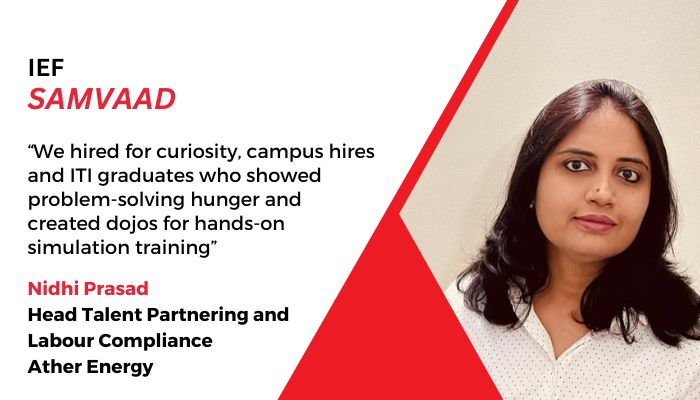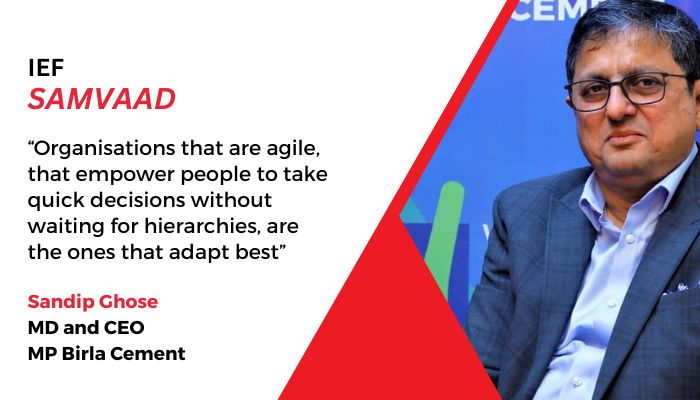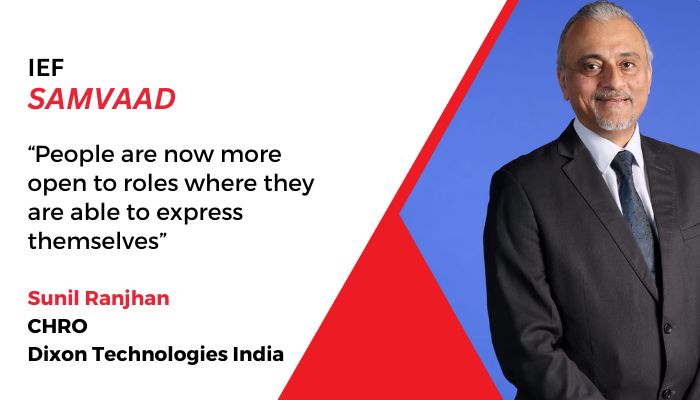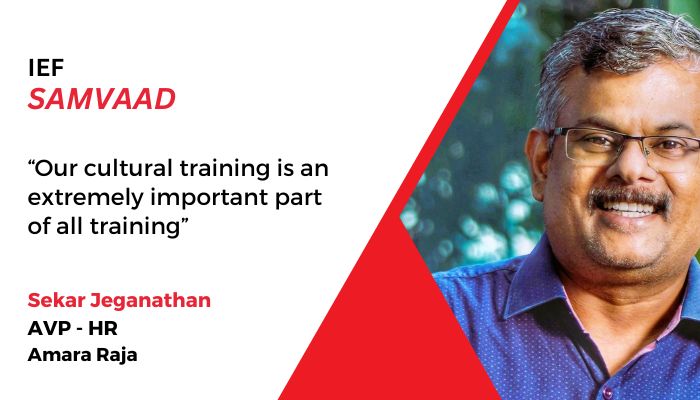Neeti Sharma, Co-Founder & President of TeamLease Edtech, speaks to India Employer Forum about the long-term benefits of L&D initiatives, gaps in organisational training, evaluating the success of L&D initiatives, latest trends in L&D and more.
Q. What are some of the long-term benefits of L&D initiatives and how do they promote a return on investment?
Learning and Development (L&D) is largely focusing on upskilling, reskilling and providing new skills for the existing workforce. In most cases, employers end up sponsoring these learning programs for their employees with an objective which is multifold. One of the key objectives that employers want out of this whole program is that they have to increase the productivity of the workforce or ensure that deployment happens the way they want it to. For example, let’s say there’s a new tech stack an IT company is adopting, and they want to ensure that their employees are skilled enough to get deployed in the tech stack or deployed in the project.
On the other hand, taking the retail or BFSI sector, employers will want to make an investment in upskilling their existing workforce, say the entry-level workforce, to ensure that their sales productivity or absolute sales numbers increase. So one of the key objectives employers look for is ensuring higher productivity. The other objective of making investments by employers in L&D or upskilling, reskilling and new skilling of the existing workforce is also ensuring that retention is a lot higher.
Q. What could be the reason behind the tepid response from the workforce with respect to L&D activities despite significant investment in these initiatives by organisations?
I will take this question into two parts; one being the pre-covid scenario and the other being the post-covid scenario. Pre covid, it was quite tepid where employees believed that it was not their duty to upskill but it was the employer’s duty to upskill them and stay relevant in the industry and the organisation. Post covid, a lot of things have changed. One, staying relevant and agile has become absolutely key for everyone, not just for organisations but employers and employees as well. I would say that things are moving upward in the right direction over the last few years where employees believe that making investments in upskilling and learning by themselves is also very critical.
Secondly, ensuring that they make the most of the learning programs that an employer is providing them is also seeing an upward trend. The fact that the first two years post covid, the tech adoption was extremely high, everybody wanted to be digitally there, ensuring that they remain relevant and agile, and employees themselves started making investments in their own skills. According to a report we released between the first & second wave of covid, almost 85% of the workforce had taken at least one learning program through the last 12-18 months of covid.
Q. Do you feel there is a lacuna in the kind of training that is being offered by organisations and if yes how can this be addressed?
Typically, if any L&D leader or business leader views training as a tick mark, obviously it’s not going to make the impact the employer is actually looking for. There has been some lacuna, everyone should go and do a first-time manager training or finance or non-finance training. It cannot be. We have to understand what the skill gaps are and then create programs which would probably address those gaps rather than just generally putting everyone into the same program. I see that was the issue a couple of years ago. Now, almost all L&D folks or business leaders want to do the training need analysis (TNA), which I believe is a must, because unless and until I know where my gap is, what training program will become relevant for me will be immaterial.
So, doing a training need analysis will ensure that there is no lacuna in the said program that is being offered to the employee. When the TNA is done, the employee also realises where they lack. Because otherwise, they would just walk into the office every morning believing “I’ve done my graduation”, “I’ve done my postgrad”, “I’ve done my engineering”, “I’ve got this job”, “I’m settled”, “I don’t think I need any more skills”. But the moment you start doing the training need analysis, the L&D folks, the employees, the trainers, and everybody realises what skill gaps are and then programs can be customised based on the gap.
Q. What are the key parameters used to evaluate the success of L&D initiatives in an organisation?
Whenever L&D leaders get a budget from business now for upskilling, reskilling and providing new skills to the existing workforce or maybe newer employees, the question always remains, what would be my return on investment? What’s the ROI on the investment I’m going to make? I typically tell all leaders that your returns are not going to be seen immediately. It always happens over a period of time. In fact, we recommend a lot of learning programs which are continuous in nature, which probably show an impact gradually, but eventually when there is an impact it definitely would mean that there is a long-term impact and not just a short-term impact.
Of course, there are various parameters. If I’m doing sales training, can my sales increase? Not tomorrow but maybe over a week, 10 days, one month, two months? Let’s say, I’m doing tech stack training, can that employee be deployed and start becoming productive the moment the training gets over? So, there are various parameters that employees view as a return that they could maybe look at. One, like I said, could be productivity, higher productivity over a period of time. Of course, learning cannot stand alone to make the difference. There has to be learning along with a couple of other variables that eventually start showing the difference.
Q. What are some of the new trends in L&D which are likely to be adopted across all organisations to keep abreast with changing times?
Given the fact that a lot of workplaces have become hybrid, I would say the first shift in learning would be that employees and employers don’t want a 100% physical training or 100% digital training. They want something which is a phygital or a hybrid form of learning. So a combination of a physical classroom, virtual classroom, self-learning, self-assignments, assessments, even on-the-job learning. So, I would say that is the first shift that we have seen and it’s only going to continue, it’s not going to change anytime soon.
The other aspect that we have seen as a shift is that while we create content and we create let’s say even an e-learning curriculum or self-learning curriculum, the pedagogy of those content creations has changed completely. You cannot now just ask somebody to read a PDF or read a PPT. It has to be engaging, it has to be personalised, it has to actually make an impact for me first before I learn and I ensure that the organisation benefits. So, obviously, we’ve heard a lot about micro-learning and bite-size learning, and using chat GPT for learning and things like that, that shift has happened. People are using augmented reality, people are using artificial intelligence, virtual reality. Many organisations are making investments in VR tools and techniques, in infrastructure so that the employees learn as almost as live sessions.
Watch the full interview: In Conversation with Neeti Sharma, Co-Founder and President, TeamLease Edtech Limited
Neeti Sharma is the Co-Founder & President of TeamLease Edtech, a TeamLease Group Company. Recently, she was featured among the top 100 women leaders globally in the Tech space by HononLQ. A proven business leader with 30+ years of rich and diverse experience with government bodies and educational institutions. Neeti is passionate about skill development as she believes that giving the right skills to people, providing them with the right guidance, making them employable and getting them to the right first job – changes their life forever.





